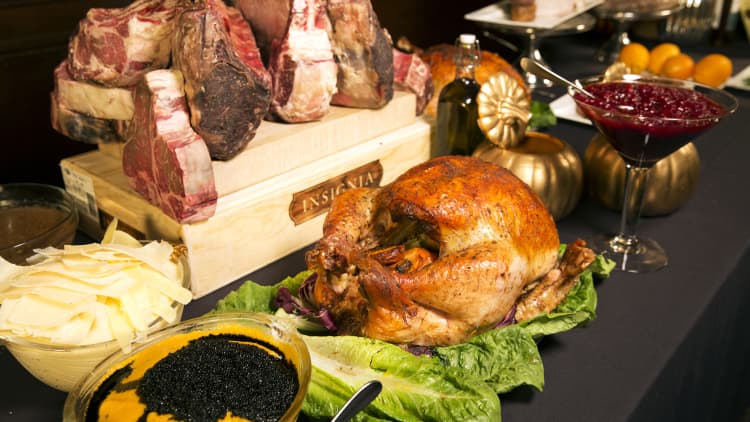TV dinners started with a mistake. In 1954, the frozen food company C.A. Swanson & Sons over-ordered for Thanksgiving and found themselves scrambling to figure out a way to sell more than 500,000 pounds of leftover turkey.
Gerry Thomas, a Swanson salesman who earned $200 a month, had an idea. Inspired by the metal meal trays used by airlines and the meal kits he encountered during his time in the military, Thomas developed a three-compartment tray that could hold a frozen dinner and keep each component separate.
He dubbed the product a "TV dinner," drawing on the growing popularity of the appliance at the time. "I figured if you could borrow from that, maybe you could get some attention," Thomas told the Associated Press in 1999. "I think the name made all the difference in the world."
Thomas was not the first person to come up with the idea of a portable, frozen meal. But Swanson's clever marketing made TV dinners an instant hit. The product featured a picture of a television on the packaging and was touted as a simple alternative to spending hours in the kitchen.
The meals flew off the shelves: More than 10 million units sold in the first year alone.
I think the name made all the difference in the world.Gerry Thomasinventor of the TV dinner
"Anything that was connected with TV was like anything connected today with personal computers," Thomas told the Washington Post. "That's cool. You're with it if you're into that. That's what TV was."
The product became a core component of Swanson's business, but it never made Thomas rich. In return for the idea, he earned a $100 bump in pay per month and a $1,000 bonus, he told the AP. That's equivalent to around a $900 monthly raise and a $9,000 bonus today.
"I didn't complain. $1,000 was a lot of money back then. It was one-third my annual salary," he told the AP. "And how could anyone know this would be successful?"
Several others also assisted in the invention and popularization of the TV dinner, according to the Library of Congress, including the Swanson Brothers themselves; Jack Fisher, whose "FridgiDinners" were sold in bars in the 1940s; and Albert and Meyer Bernstein, who sold three-compartment frozen meals across the Pittsburgh area in the early 1950s. By 1954, the Bernsteins had sold more than 2.5 million dinners under their Quaker State Foods label.
Swanson was the first company to name and market the frozen meals as TV dinners, though, which helped make the product a runaway success.
Like this story? Subscribe to CNBC Make It on YouTube!
Don't miss: Apple products, rent, college and 12 other things Americans say cost too much



